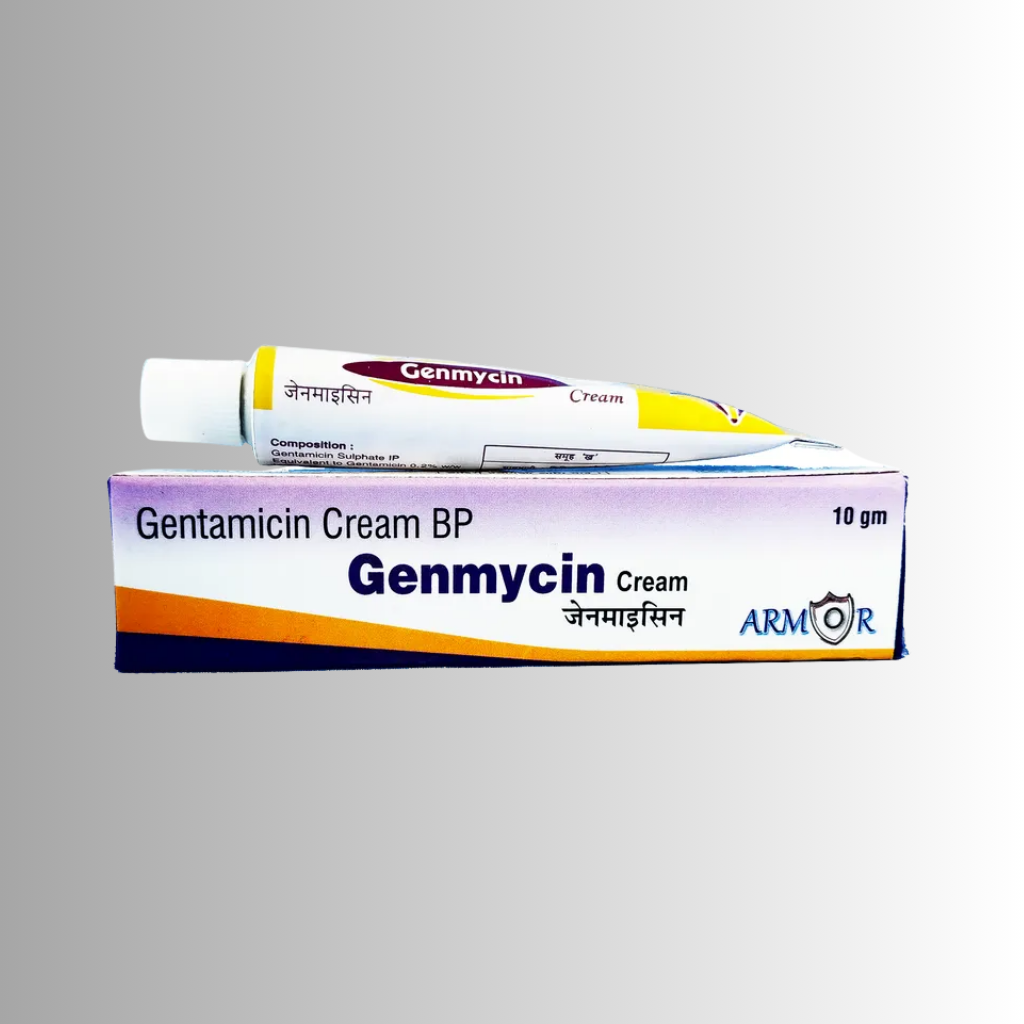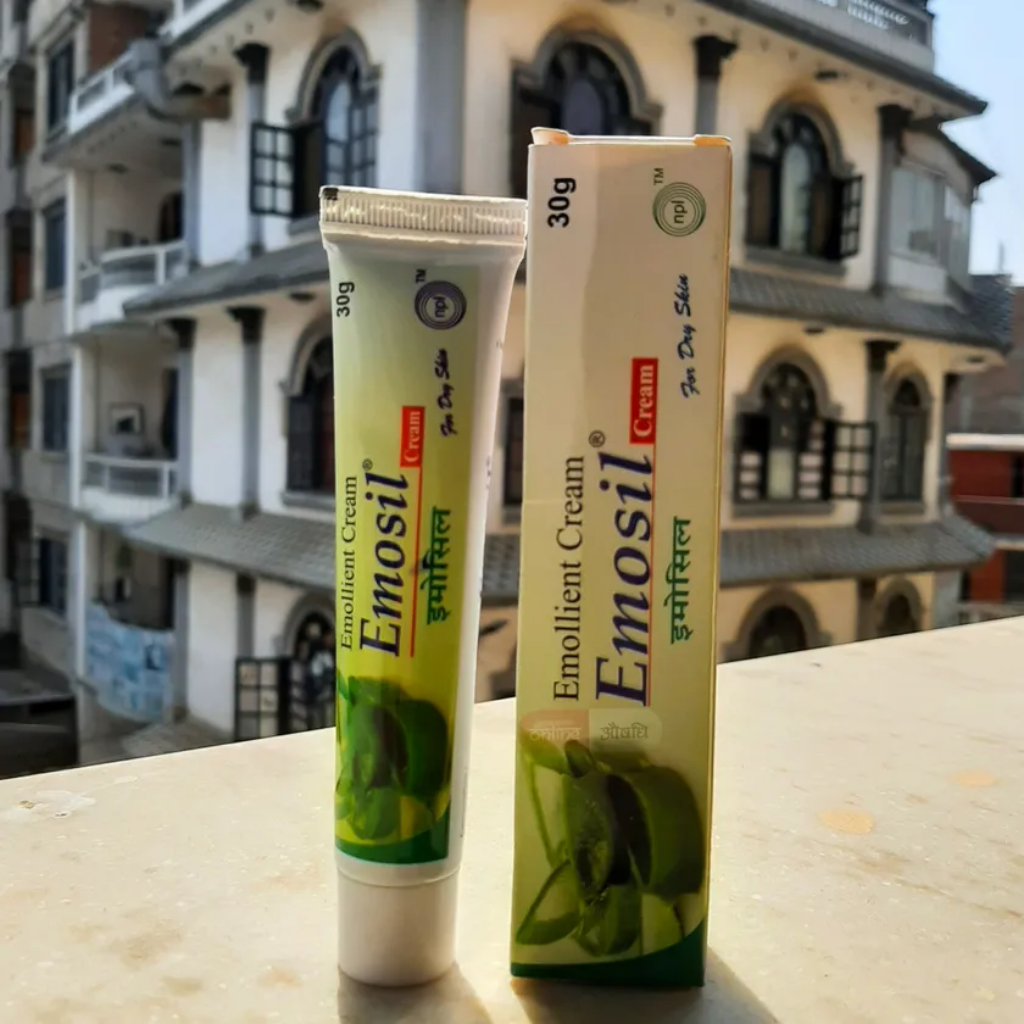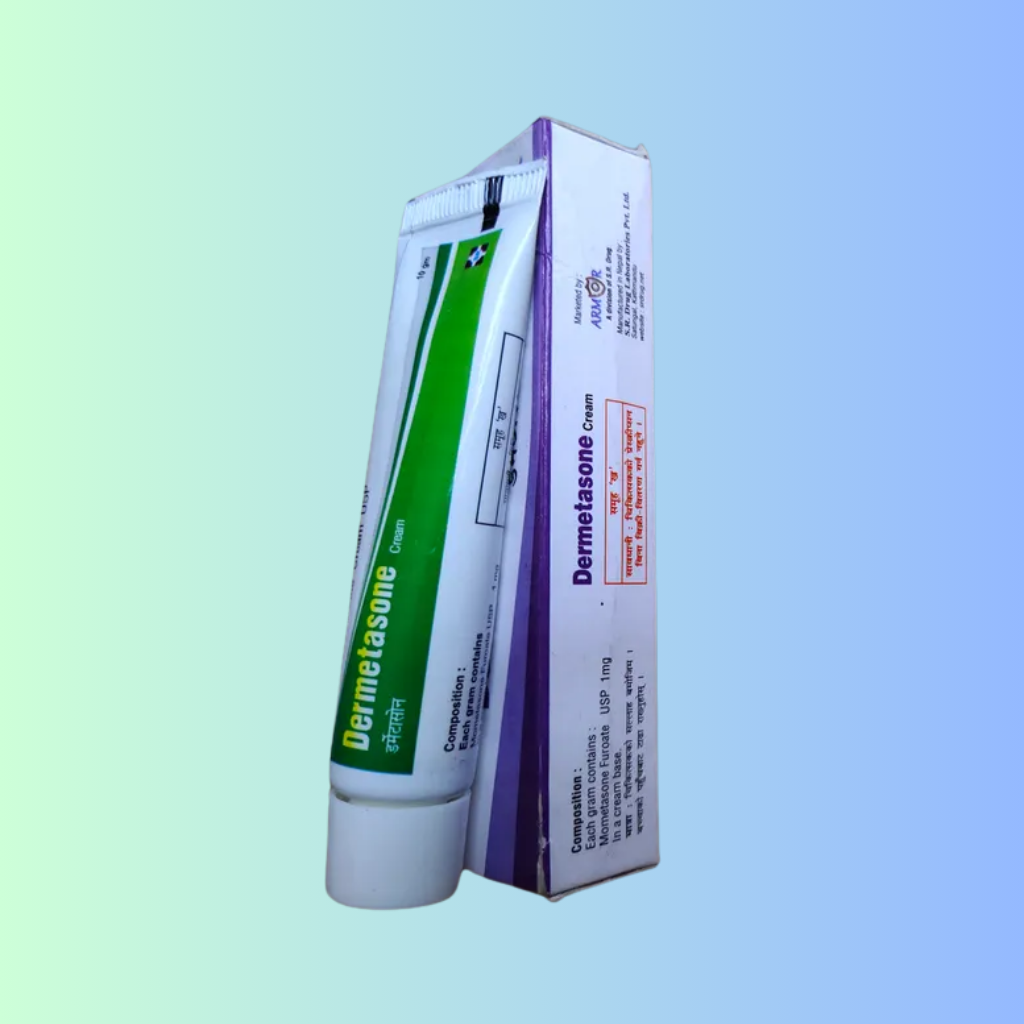Genmycin Cream-10Gm
“Genmycin Cream-10Gm” almost certainly refers to a topical antibiotic cream containing Gentamicin. It is used to treat various bacterial skin infections. In Nepal, brands like “GENMYCIN” (from S.R. Drug Laboratories Pvt. Ltd.) and “GENTIN” (from Nepal Pharmaceuticals Laboratory Pvt. Ltd. (NPL)) are available with Gentamicin Sulphate as the active ingredient, often at a strength of 0.2% w/w.
₨25.00
Ask about productDescription
“Genmycin Cream-10Gm” almost certainly refers to a topical antibiotic cream containing Gentamicin. It is used to treat various bacterial skin infections. In Nepal, brands like “GENMYCIN” (from S.R. Drug Laboratories Pvt. Ltd.) and “GENTIN” (from Nepal Pharmaceuticals Laboratory Pvt. Ltd. (NPL)) are available with Gentamicin Sulphate as the active ingredient, often at a strength of 0.2% w/w.
Active Ingredient:
- Gentamicin Sulphate (typically 0.1% w/w or 0.2% w/w): Gentamicin is an aminoglycoside antibiotic.
Mechanism of Action: Gentamicin works by:
- Inhibiting Bacterial Protein Synthesis: It binds to the bacterial ribosome (specifically the 30S subunit), which interferes with the bacteria’s ability to produce essential proteins needed for their survival and growth. This ultimately leads to the death of the bacteria (bactericidal action).
- Broad-Spectrum Activity: It is effective against a wide range of bacteria, including both Gram-positive and Gram-negative organisms, making it useful for various skin infections.
Key Uses: Genmycin Cream is used to treat various primary and secondary bacterial skin infections. These include:
- Primary Skin Infections:
- Impetigo contagiosa: A highly contagious bacterial skin infection common in children, characterized by sores that form a honey-colored crust.
- Folliculitis: Inflammation of hair follicles, often caused by bacteria.
- Ecthyma: A deeper form of impetigo.
- Furunculosis (boils) and Carbuncles: Deep-seated infections of hair follicles.
- Sycosis barbae: Bacterial infection of beard hair follicles.
- Secondary Skin Infections: When a pre-existing skin condition becomes infected with bacteria. This can include:
- Infected eczema (dermatitis): Where inflamed skin patches become secondarily infected.
- Pustular acne or infected seborrheic dermatitis: If these conditions develop bacterial complications.
- Infected cuts, wounds, abrasions, burns: To prevent or treat bacterial infection.
- Infected skin cysts or abscesses: After drainage.
- Infected insect bites and stings.
- Infected stasis ulcers: Skin ulcers due to poor circulation.
Side Effects
Genmycin Cream is generally well-tolerated. Side effects are typically local and mild. However, systemic absorption can occur, especially with extensive use on large areas of broken skin, leading to more serious, albeit rare, side effects.
Common Side Effects (at the application site):
- Skin irritation: Mild burning, stinging, itching, or redness (erythema).
- Rash
- Pruritus (itching)
Less Common / Potentially More Serious Side Effects (rare, typically with high absorption):
- Allergic Contact Dermatitis: An allergic reaction to gentamicin or other ingredients in the cream, causing redness, swelling, blistering, and severe itching.
- Superinfection: Prolonged use can lead to the overgrowth of non-susceptible organisms, including fungi (e.g., yeast infections) or resistant bacteria. This might appear as worsening of the original infection or a new type of rash.
- Ototoxicity (hearing damage) or Nephrotoxicity (kidney damage): While extremely rare with topical application due to minimal systemic absorption, these are serious side effects associated with systemic (injected or oral) aminoglycosides. The risk is higher if applied to large areas of broken skin, especially in patients with kidney impairment.
- Photosensitivity: Increased sensitivity to sunlight.
- Adrenal suppression: Very rare if the cream also contains a corticosteroid, but this product description seems to indicate it is only Gentamicin.
If any severe local reaction or signs of systemic effects occur, discontinue use and contact your doctor.
Precautions
- For External Use Only: Do not ingest the cream. Avoid contact with eyes, mouth, nose, and other mucous membranes. If accidental contact occurs, rinse thoroughly with plenty of water.
- Allergies: Do not use if you have a known allergy to gentamicin, other aminoglycoside antibiotics (like neomycin, tobramycin, amikacin, streptomycin), or any other ingredients in the cream.
- Untreated Viral or Fungal Infections: This cream is an antibacterial. It will not work for viral (e.g., herpes, chickenpox) or fungal (e.g., ringworm, athlete’s foot) infections and may even mask their symptoms, delaying appropriate treatment.
- Open Wounds / Large Surface Area: Use with caution on large areas of broken skin, severe burns, or extensive wounds, as this can increase systemic absorption and the risk of adverse effects, particularly in children or patients with kidney impairment.
- Prolonged Use: Avoid prolonged or excessive use of any antibiotic, including topical ones, to prevent the development of bacterial resistance and superinfections. Use for the shortest duration necessary to clear the infection.
- Pregnancy and Breastfeeding: Consult your doctor before using Genmycin Cream if you are pregnant or breastfeeding. While systemic absorption is minimal, it’s best to err on the side of caution. If breastfeeding, avoid applying it to the breast area.
- No Improvement: If the skin infection does not improve within a week (or as directed by your doctor), or if it worsens, discontinue use and consult your doctor.
- Sharing: Do not share this medication with others, even if they have similar symptoms, to prevent the spread of infection or antibiotic resistance.
Prescription Information
- Availability: Genmycin Cream is typically available in pharmacies. Depending on the local regulations in Nepal, it might be available over-the-counter or require a prescription. For bacterial infections, medical diagnosis and prescription are always recommended.
- Dosage and Administration:
- Frequency: Apply a small amount to the affected area 3 to 4 times daily (or as directed by your doctor).
- Application:
- Cleanse and dry the affected skin thoroughly before applying the cream.
- Apply a thin layer of the cream gently to the entire affected area.
- The treated area may be covered with a sterile gauze dressing if desired, but this should be discussed with your doctor, as it can increase absorption.
- For impetigo, gently remove any crusts from the infected skin before application to allow maximum contact between the antibiotic and the infection.
- Wash your hands thoroughly after applying the cream, unless your hands are the treated area.
- Consistency: Use regularly as prescribed by your doctor to ensure the infection is completely cleared. Do not stop treatment early, even if symptoms improve, to prevent recurrence and resistance.
- Missed Dose: If you miss a dose, apply it as soon as you remember. If it’s almost time for your next dose, skip the missed one and continue your regular schedule. Do not apply a double dose.
- Storage: Store at room temperature (typically below 30°C), away from direct sunlight, heat, and moisture. Keep out of reach of children. Do not use after the expiry date
Additional information
| form | Cream |
|---|







Reviews
There are no reviews yet.